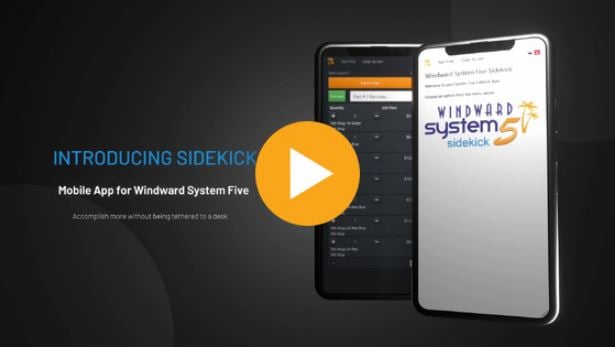WARNING: Please perform inventory integrity with 'fix' options before performing a physical count.
This article is here to describe at a high level the strategies used in the “Big Count” method. Serial numbered parts are not included as part of this process, please verify your serial numbers separately. This article describes doing year-end inventory counts. Adjustments would have to be made to the processes described to use them for cycle counts.
The Big Count method is used when you have a data collector like the HT630 or another type. HT630 would be my default choice for a data collector to purchase. A handheld scanner is a device where we generally load a small program that allows you to scan a product and then enter a quantity. The program allows you to go around and scan your parts into the device, dock it to your PC, and then load it to an invoice, physical count, or purchase order (limited functionality on PO's). This can greatly speed up the counting of inventory because you can go out into the yard and scan products making data entry very quick.
The idea behind doing a Big Count is very simple and can be broken down into 3 steps:
- A big uninitialized count that we attach all scan batches too. (EVERYTHING YOU CAN SEE)
- A periodic stock count of all items in stock that have not been counted. These are the items that System Five tells us that we missed with the scanners. (WE DIDN'T SEE IT BUT THE SYSTEM SAYS IT IS IN STOCK)
- A periodic stock count of all items still not counted. Mainly items System Five tells us are not in stock and not yet counted. (SYSTEM SAYS WE DON'T HAVE IT, AND WE STILL HAVE NOT FOUND IT)
- Each step must be completed entirely before the next step is started.
WARNING: Unique Parts
For you to be able to count using a handheld data collector using the Big Count method you must have barcodes that uniquely identify the parts you are scanning. They must also correspond to regularly stocked inventory items.
- You don't want to have to re-count or not be able to use your data collector so TEST TEST TEST to make sure you know for sure that your parts have unique values. This can cause major headaches during your count process if the product is not uniquely identified.
- You can not for example use a matrix header part as your barcode because it does not follow the rules above.
- If you are not sure, please test some scenarios.
IMPORTANT: Why use the Big Count Method?
The big count method solves one very significant problem for many retailers. That is that each product is often in more than one location. I may have my widgets on a shelf on the floor, in the warehouse, and in a display. If I don't include all counts for this product on one Big Count batch the counts will not be correct when I am finished.
Explanation (Non-AIC)
AIC stands for Advanced Inventory Control. The system knows how many are at each location and this problem does not occur for data sets with AIC. If product ABC shows up as 3 in one location and 2 in another location totaling 5 you should end up with 5 when my count is completed. If you count this product on 2 different batches you will end up with 2, 3, or 0 depending on the order of the steps you took.
CAUTION: Work Orders
Please remember to do a small but thorough test count for items on work orders. There is a setting to exclude parts on work orders that changes how System Five reports the current quantity and hence affects how you count.
- All sales where customers have received products must be completed before starting the Big Count process.
- All products on work orders must either be excluded from your count or included in your count based on the “Exclude parts on work orders” setting. A mixed method produces mixed results and is very difficult to get correct.
CAUTION: Open for Business During the Count
It is OK to be open for business during your count. The main thing to remember when doing the big count method is that you want the items you scanned to be added to the big count batch as close to when you scan them as possible. This prevents errors in counting due to someone purchasing the product after you scan it but before you add it to the big count batch. If full control is needed you will have to explore more detailed methods of control.
Scanning at Regular Intervals, Minimizing Data Loss
In our previous section, we discussed scanning and adding items to our batch to minimize errors caused by people making purchases in the sections we are counting as we count. Another important consideration is data loss. I suggest uploading scans every 30 to 60 minutes and keeping track of what sections were scanned for each batch. This is important because it minimizes how much information you will lose if the data fails to load to the PC, or there are other errors. As a side point, more reasonable-sized batches that correspond to logical breakdowns like category or location can help you undo duplicate counts and other errors more easily.
Mixed Methods
It is reasonable to start mixing methods and move away from the strict process of the Big Count method. Another common method is the printout method. This method involves breaking down items by category or location and printing out sheets that your users can count. It is important to plan and test thoroughly your method to make sure it really is working for you as you need it to.




